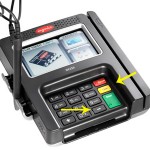When a customer is prompted for signature, the transaction is basically over. An authorization has been returned and the signature is for merchant records. As has been reported on 60 Minutes and other media, often cashiers don’t even look at the signature. That’s a mistake.
The signature is critical to merchant defense of disputed transactions.
From MasterCard Transaction Processing Rules, December 2014, “When a signature is obtained as the CVM for a POS Transaction completed with a Card (but not when a Contactless Payment Device is presented), the Merchant must compare the signature on the Transaction receipt with the signature on the Card to determine whether they appear to be the same. If the Merchant believes that the signature on the Card does not match the signature on the Transaction receipt, the Merchant must contact the Acquirer for instructions. The signature would not match if the name appearing on the Card’s signature panel is different from the name appearing on the Transaction receipt (for example, if the Card were signed “Jan H. Hanley” and the Transaction receipt showed “Bob Hanley” or “F. Hanley”). The signature would be acceptable if the Cardholder’s first and/or middle names is abbreviated on the Transaction receipt (such as J. H. Hanley) or if a title such as Mr., Mrs., or Dr. is missing or is included.”
For high dollar transactions, most merchants will run extra security, such as validating the last 4 digits of a card. Often cloned cards will not match the front digits with the magnetic stripe data. Here’s a recommended process to reduce credit card chargebacks for reason “It wasn’t me.”:
- Cashier asks to see card.
- Cashier types in last 4 and hold onto card.
- Customer prompted for signature.
- Cashier compares signature to actual name and style. Force Reset and get another signature if not a match. Call processor if unable to match.
Need a solution for signature capture? We offer both integrated and non-integrated solutions, including for Ingenico, Verifone, and Equinox terminals.

